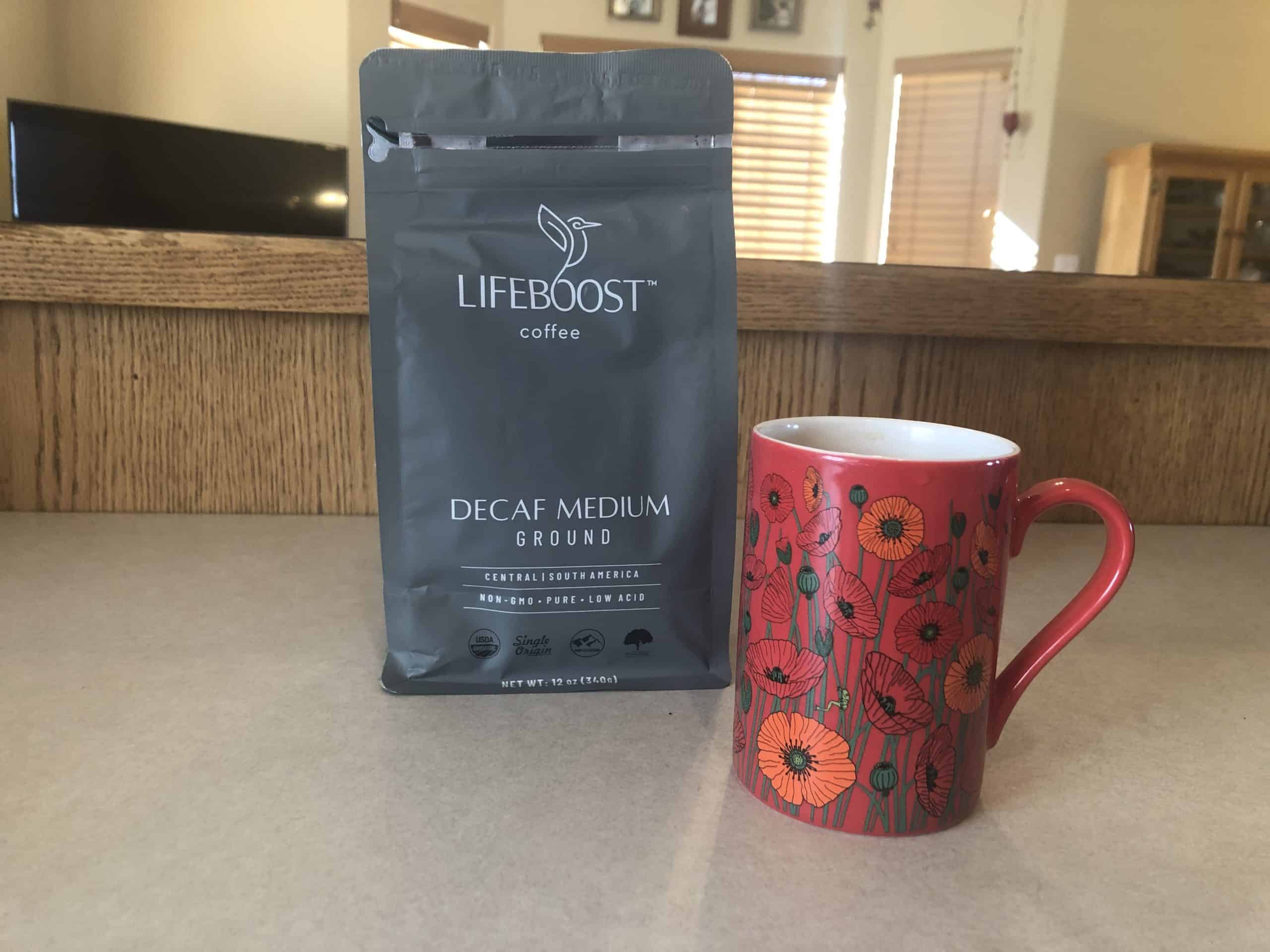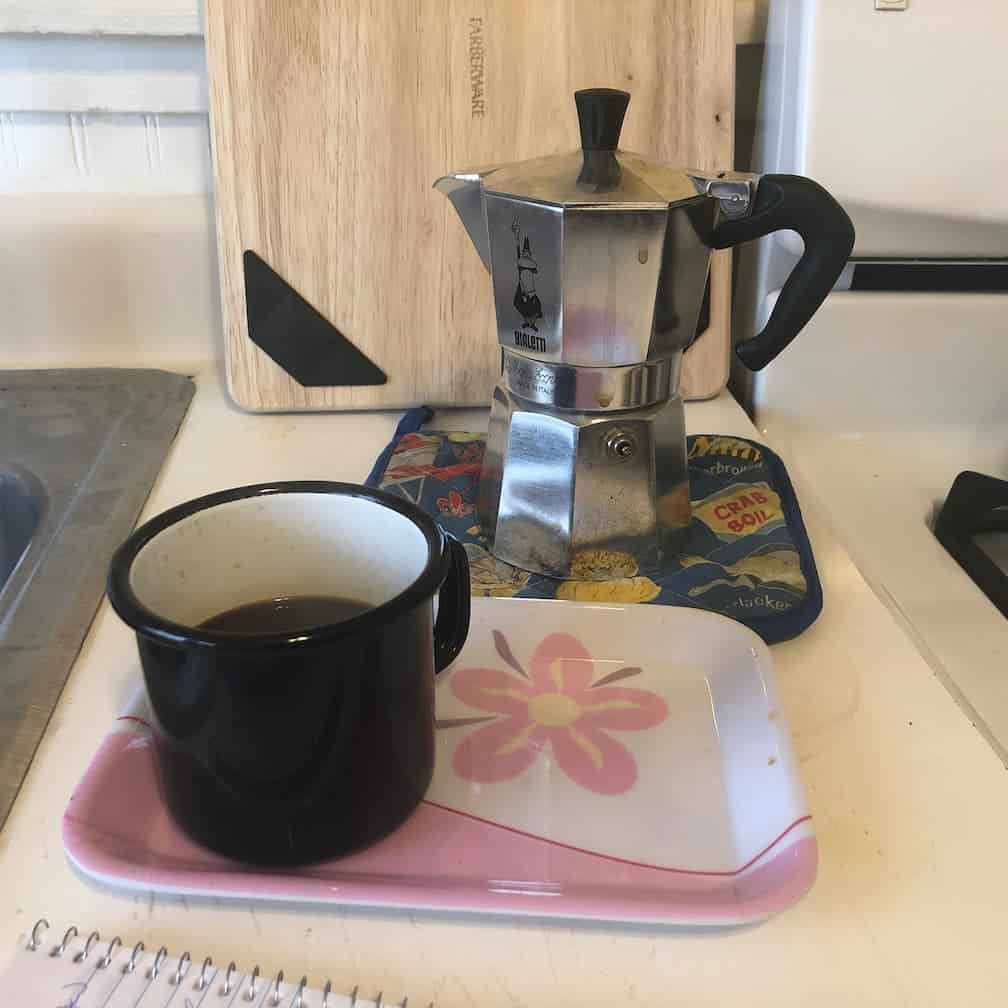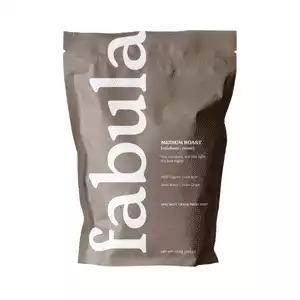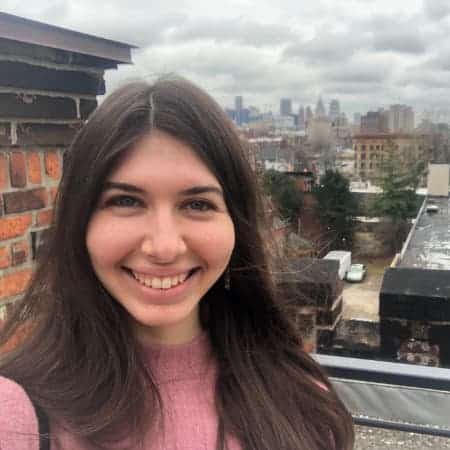How Much Caffeine Is In Decaf Coffee?
I often say decaffeinated coffee gets a bad rep.
Some coffee lovers think a full glass of caffeine makes them Serious Coffee People, but those of us who actually drink decaf know that decaf coffee is actually great.
But other haters like to scare you off, insisting there’s still caffeine to worry about in decaf coffee.
So how much caffeine is in decaf coffee, really, and how does that compare to regular coffee?
As an (near 100%) exclusive decaf coffee drinker, I’ll share the skinny on decaf coffee, the decaffeinating process, and how much caffeine in decaf coffee is actually left.

What Is Decaf?
Decaf coffee refers to two things:
- Decaffeinated coffee beans
- Brewed coffee that is caffeine-free
Coffee beans naturally have caffeine, but they can be decaffeinated. After or during normal coffee processing, the beans undergo a process — usually using water or chemical solvent rinses — that basically flushes out the caffeine content.
Decaf coffee is popular with people who suffer a variety of health conditions (including me!), because the caffeine content in the coffee bean after decaffeination is practically zero.
Those who have stomach/digestive disorders, high blood pressure, and heart conditions in particular often don’t handle caffeine well. Some people are also more sensitive to the effects of caffeine or are taking medications that prevent them from ingesting caffeine.
Of course, others appreciate decaf periodically or for the short-term as a way to reduce their overall caffeine intake.
Pregnant women often avoid or greatly minimize their intake in line with advice from their healthcare provider, and others who get plenty of caffeine in other ways (such as from tea or chocolate), may be interested in cutting back when they can.
How Is It Made?
There are a few ways to decaffeinate coffee, but the two most popular methods decaffeination are:
- Chemical solvent process
- Swiss Water method
The chemical solvent decaffeination process involves rinsing green, or unroasted, coffee beans with chemical solvents (either methylene chloride or ethyl acetate) repeatedly.
The solvents draw out the caffeine molecules — and other flavor compounds — from the beans, which are then rinsed with water.
In the Swiss Water process, coffee is decaffeinated using osmosis. One batch of green beans are soaked in hot water to create green coffee extract. The extract is run through carbon filters that remove the caffeine molecules.
Then, that green coffee extract is used to wash and filter a second batch of beans. When the extract is applied, the caffeine naturally leaches out.
The Swiss Water method is increasingly the most popular method of decaffeinating coffee because it leaches out caffeine without losing all the flavor, antioxidants coffee is known for. It results in some delicious decaf coffee.
It’s also popular among those who don’t feel comfortable using extra chemicals like ethyl acetate.P.S. We have a whole article on the decaffeination process if you want to learn more.

Is Decaf Coffee Caffeine-Free?
Strictly speaking, decaf coffee is not 100% free of caffeine.
The term usually refers to things which are naturally caffeine-free (just like ‘gluten-free’ refers to something that has no gluten and never had gluten in it). This isn’t quite the case with decaffeinated coffee.
The vast majority, over 95%, of the caffeine is removed during decaffeination. The amount of caffeine in decaf coffee is so minuscule, most people can ignore the amount left in.
How Much Caffeine Is In Decaf Coffee?
When trying to understand how much caffeine is in decaf coffee beans, it’s worth comparing it to other substances.
There’s an average of 3 mg of caffeine in decaf coffee vs. 80-140 mg in an average cup of regular coffee, a.k.a caffeinated drip.
(That number can go up to 180 or even 200 mg though, depending on how strong you make it and whether you brew it with a machine percolator or by hand.)
Dark chocolate, however, has much more caffeine than decaf. A 3.5 oz of dark chocolate (70-85% cacao) can have around 80 mg — comparable to caffeinated cups. Note for chocolate fans: milk chocolate has much less, averaging about 20 mg for the same-size bar.
So when it comes to decaf coffees, most people can comfortably ignore the amount of caffeine that’s still present. Unless you prepare a really unusual cup of coffee (say, with eight shots of decaf and plenty of chocolate), you’re looking at a negligible amount of caffeine.
How much caffeine is in an 8 oz cup of decaf coffee?
The average 8 oz cup of decaf drip has about 2 mg of caffeine in it.
In fact, there is so little caffeine left in decaffeinated coffee that most forms of it — no matter what brew method you use — will have about 0-7 mg of caffeine, with 3 mg being the most common average.
Although that’s a bit more than zero, it’s so small, most people don’t have to worry about the caffeine left in decaf.
Note: This is only the case for black coffee. Some flavors or add-ins, like chocolate or chai mix/concentrate, are caffeinated. Your decaf coffee only stays decaffeinated if you don’t add caffeine-heavy ingredients to it.
Decaf Coffee VS Decaf Tea
Like coffee, most tea is not naturally free of caffeine — except for herbal teas! — and has to have it removed to be called ‘decaf.’
The average cup of decaf tea has 2-20 mg of caffeine left after decaffeination, or about 1-2% on average. This variation is due partly to the variety of tea used. An 8 oz serving of black tea averages 40-60 mg to begin with, while green tea averages about 15 mg.
Overall, decaf coffee may be less caffeinated than decaf tea, depending on the type you’re drinking.
Which decaf coffee has the least caffeine?
Although all decaf coffee has very little caffeine left, you can be sure you’re getting the least amount possible by choosing beans made with the Swiss Water Decaf or Mountain Water process.
The Swiss/Mountain Water methods are certified to be 99.9% free of caffeine, which is about as completely decaffeinated as you can get.
Other methods are still pretty darn good at removing the caffeine from coffee, but they’ll leave a tad more in your cup.
The methylene chloride decaf process leaves more caffeine — taking away about 96-7% on average. Ethyl acetate leaves the same results, removing approximately 97% from coffee.
The Supercritical Carbon Dioxide Process, which is the least common method, is the most variable (although it’s probably also the least studied). It removes anywhere from 94-98% of the caffeine from coffee.
The Swiss and Mountain Water methods, which are different versions of the same basic method for decaffeinating coffee, are definitely your surest bet for having the least caffeine (and the best taste).
Still, at the end of the day, you’re looking at less than 5% of the original caffeine content by pretty much any method of making decaf coffee.
Example: Fabula Coffee
Fabula Coffee is an awesome choice if you want coffee that is definitely low on caffeine and made with the Swiss Water method.
All of their coffees are certified organic, grown and processed to be as low-acid as possible, non-GMO, and single-origin. They’re also tested for mold and hundreds of toxins, so you’ll get the cleanest coffee possible.
Here’s a full review of Fabula coffee if you’re interested in trying it. If you’re interested in decaf as someone with acid reflux or other health concerns, Fabula may be a good choice for you.
Wrapping Up
Decaf coffee has almost zero caffeine left, averaging 2-7 mg no matter how you brew it. When you compare that to 80-140 mg for an average cup of caffeinated coffee.
It is way easier on the stomach, won’t give you symptoms like a racing heart or the “jitters,” and it’s still completely delicious.
Because it’s just shy of being totally caffeine-free, decaf coffee is a great solution for many with certain health conditions, who are pregnant, or who just want to watch their caffeine intake from time to time.


